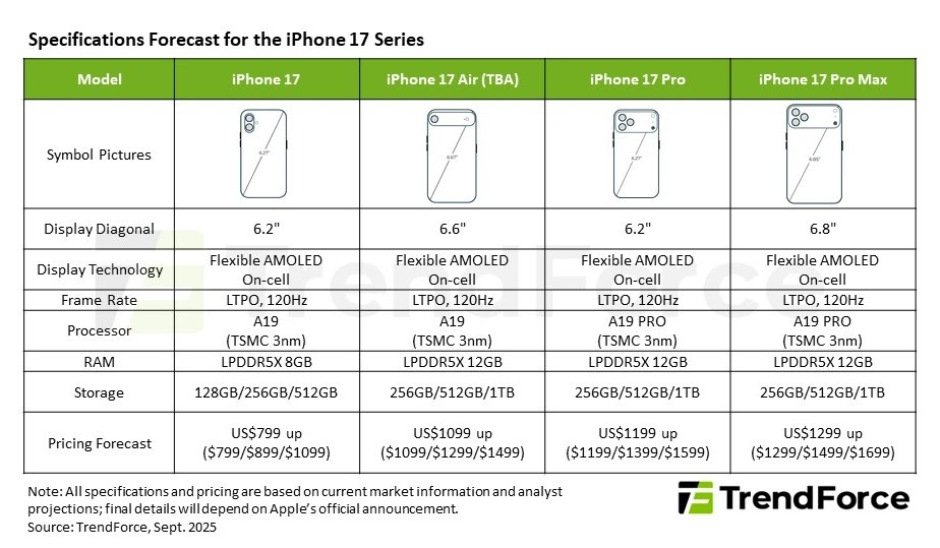Apple is preparing to unveil its highly anticipated iPhone 17 series, which will include four flagship devices: the iPhone 17, iPhone 17 Air, iPhone 17 Pro, and iPhone 17 Pro Max. This launch marks one of Apple’s biggest product refreshes in recent years, focusing on design, performance, and camera upgrades. For smartphone customers considering an upgrade, here are the key details you need to know.

New Models and Market Strategy
The biggest surprise in this year’s lineup is the iPhone 17 Air, Apple’s first thin-and-light flagship device. Positioned as a direct competitor to Samsung’s Galaxy S25 Edge, the Air highlights Apple’s push into a slimmer form factor. However, to achieve its sleek design, Apple is expected to reduce battery size and trim some camera specifications, which may not appeal to heavy users or photography enthusiasts.
According to TrendForce, Apple expects iPhone 17 shipments to grow 3.5% year-over-year, with the Pro models remaining the top sellers. Still, sluggish global economic conditions and higher pricing could temper overall demand.
Hardware Upgrades That Matter
Processors: The iPhone 17 and 17 Air will use the A19 chip, while the Pro series will feature the more powerful A19 Pro.
Memory and Storage: The Air, Pro, and Pro Max will ship with 12GB RAM and start at 256GB storage, scaling up to 1TB.
Battery: The Air introduces a silicon anode battery to balance slimness with endurance and will adopt an eSIM-only design.
Cameras: The entire series gets a major camera upgrade. Front cameras move from 12MP to 24MP, while all rear cameras increase to 48MP. Pro models will stand out with a redesigned rectangular camera array and advanced software for optical zoom.
Pricing Outlook
Apple is expected to maintain the base iPhone 17 price, while the Air, Pro, and Pro Max will see price increases of $50–$100 compared to last year’s models. This reflects the cost of new hardware, camera systems, and design improvements.
Bigger Picture: Apple’s Product Roadmap
The iPhone 17 Air is not just a new device—it signals Apple’s broader strategy to diversify its iPhone portfolio. TrendForce notes that Apple may move toward a staggered release cycle, launching a sub-flagship model in the first half of the year, followed by the Air, Pro, Pro Max, and eventually a foldable iPhone in the second half.
Key Takeaway for Buyers
For customers, the iPhone 17 series brings faster processors, better cameras, and more storage as standard. The Pro models will remain the go-to choice for performance and photography, while the Air caters to those who value a lightweight design. However, expect higher prices on most models and trade-offs in battery life for the Air.
With Apple set to refresh its lineup and expand its product matrix, buyers should weigh performance needs, photography expectations, and pricing before deciding which iPhone 17 is the right fit.
Baburajan Kizhakedath
